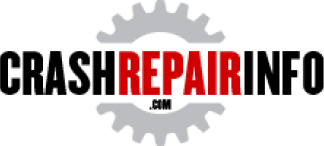YOUR INSURANCE COVERAGE
Each state has unique minimum liability insurance requirements you must carry. For information on those requirements, please see your insurance provider. As you determine how to protect your vehicle, here are a few points to consider:
- Your automobile insurance policy is a binding legal contract. Be sure to read it.
- A standard automobile insurance collision policy will pay for covered repairs up to the fair market value of your vehicle less any deductible you have chosen for your policy. It's important to remember that this value can be significantly lower than the cost of replacing your vehicle (or your loan balance). If your vehicle is financed or leased, you may need "gap insurance" in order to be reimbursed any difference between what you owe and what the vehicle is worth.
- In addition to gap insurance, many companies offer replacement cost coverage to cover the total cost of replacing your new vehicle(s) in the event of a total loss. Vehicle owners should carefully review their options.
- Insurance companies are stepping up their specification of non-OEM (Original Equipment Manufacturer) parts (salvage and aftermarket parts) on repair estimates. Here's a sample of policy language that allows an insurance company to use non-OEM parts:
- "(The insurance company's) preparation of Auto Physical Damage estimates contain: CAPA certified sheet metal parts; quality salvage, rebuilt, reconditioned and/or remanufactured OEM parts as they apply and the adjuster determines they are of like kind and quality; non-certified aftermarket crash parts where the manufacturer's warranty meets or exceeds the OEM warranty, to include headlamps, tail lamps, front/rear bumper covers, and bumper parts (excluding energy absorbers and HSLA reinforcements)."
- Some insurers have specific additional premiums to add the right to repair with all OEM parts. Check with your insurer about how much this will add to your premiums.
- Today's vehicles use more advanced high-strength steels, exotic metals and composite materials than ever before. They include highly advanced crash-mitigation and safety-system technologies. It is critical for these systems to be repaired with parts that will deliver the intended level of form, function, performance and safety the vehicle engineers originally specified. The best way to know you are getting this level of protection is to use Original Equipment collision replacement parts that are installed following the manufacturer's recommended procedures. No other parts meet this level of testing. Therefore, be sure to know what type of parts your insurer will use in case of an accident, prior to accepting coverage.
- Some state governments have specific rules regarding the use of non-OEM collision parts. Here are two examples of important state laws that apply to non-OEM collision parts: The first requires only that you are told about the use of such parts (called "disclosure"—this is very common); the second requires that you actually give the go-ahead before non-OEM collision parts are used (called "consent"—this applies in a variety of ways, but in only about a quarter of the states):
Sample Disclosure Requirement
"A repair facility shall not use aftermarket crash parts in the repair of a customer's motor vehicle without disclosing the proposed use of such parts in the estimate of repairs given to the customer prior to the repair of the motor vehicle. The estimate shall be in writing and shall clearly identify each part proposed to be used which is an aftermarket crash part."
Sample Consent Requirement
"No insurance company may require the use of aftermarket crash parts when negotiating repairs of the motor vehicle with any repairer unless the motor vehicle owner consents in writing at the time of the repair to the use of aftermarket crash parts."
Be sure you know your rights.

